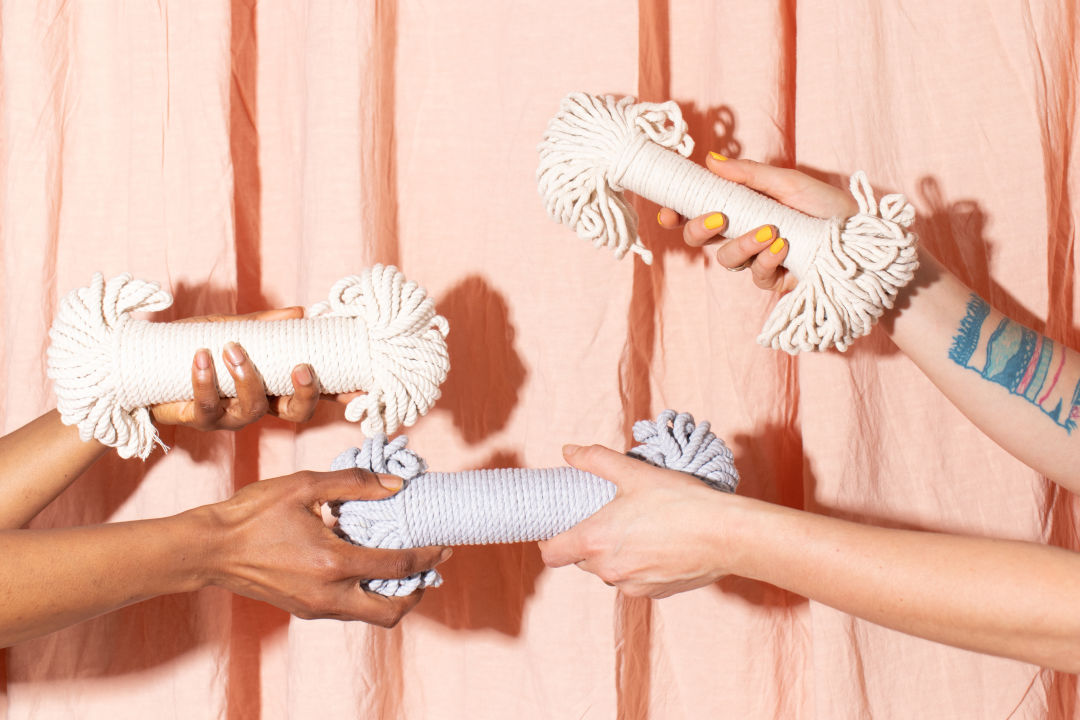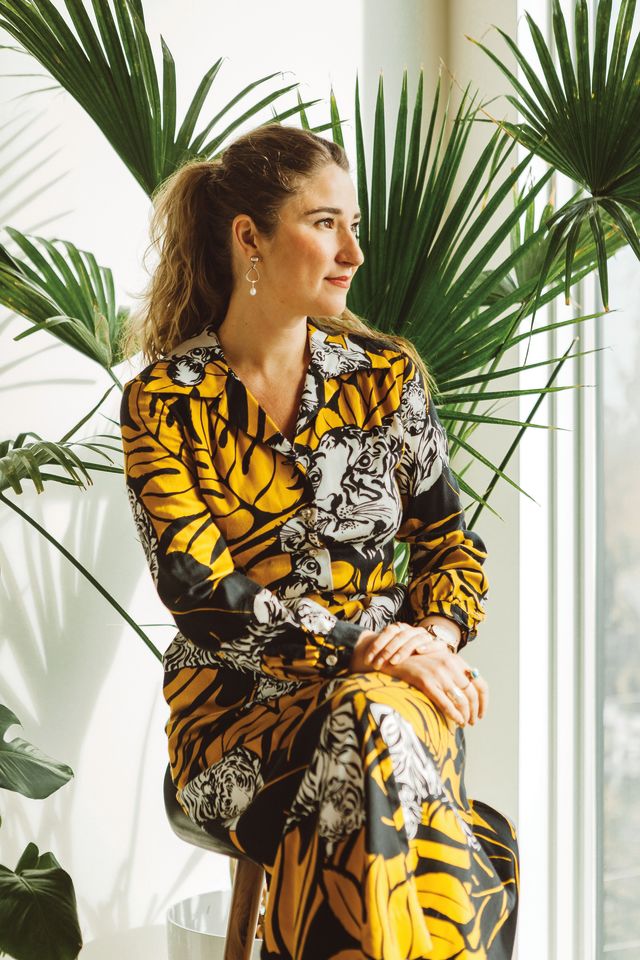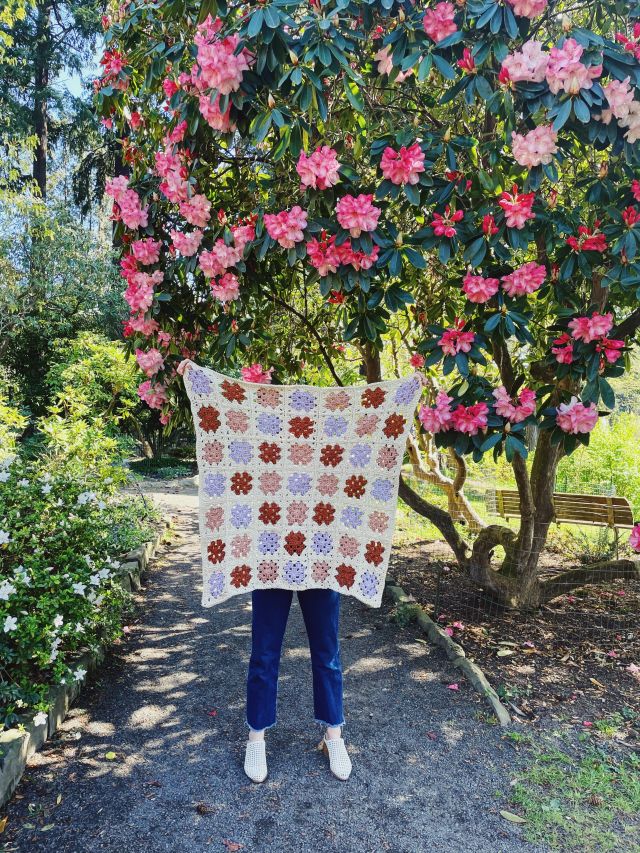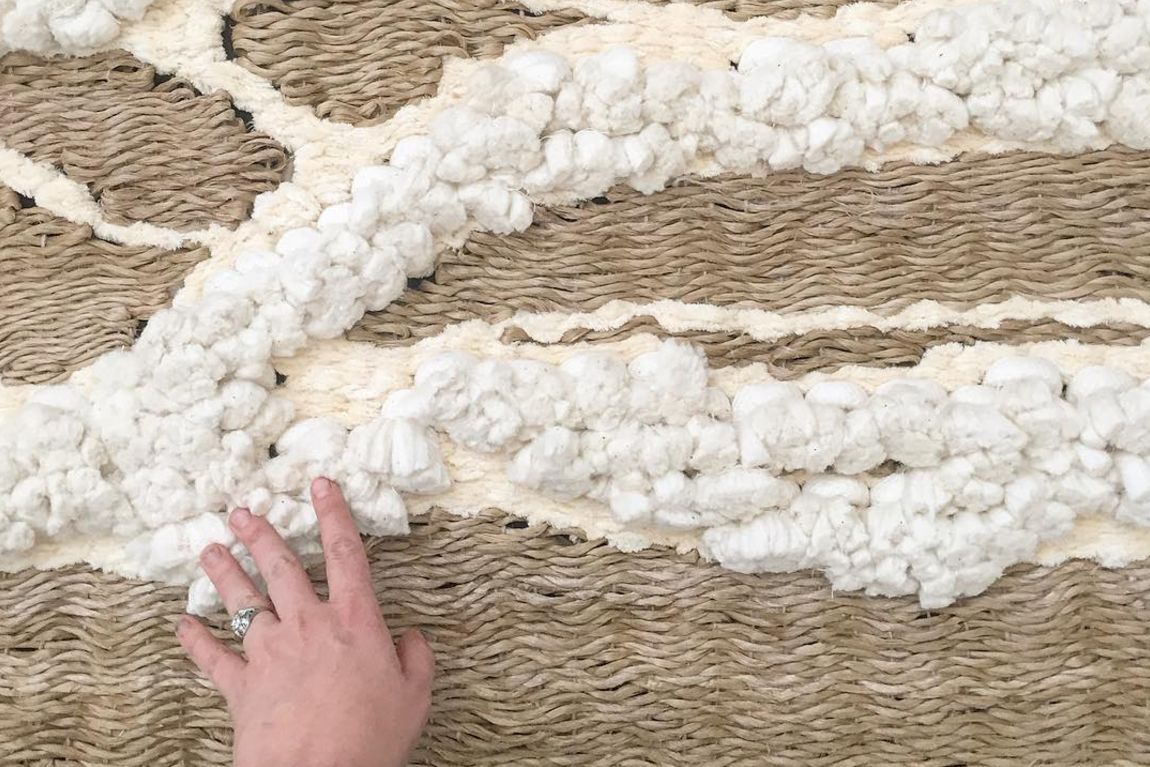Macramé Is Having a Moment

Image: Courtesy Modern Macramé
If you are the owner of a store in Portland that has the words “Mercantile” or “Apothecary” in the title, or perhaps an ampersand, then chances are that somewhere in your space, you are right this very minute selling some macramé—a cunning plant holder, an artful wall hanging, a fringe-in-all-the-right-places bikini top for wearing to next year’s Pickathon.
When did this happen? When did macramé’s moment arrive—or, more accurately, re-arrive, since the art form of knotting loose threads into decorative fiber arts and textiles dates back to Arabic makers in the 13th century, then had a more recent heyday in the 1970s, when avocado-colored macramé owls and birdcage lampshades were the height of haute hippie style?

Emily Katz
Image: Nicole Franzen
Depending on your perspective, the world can thank—or blame—Emily Katz, the Portland macramé artist and influencer whose origin story with the craft dates to 2013, when she was struck by the sudden desire to make a macramé plant holder and reached out to her long-estranged mother for help.
The following year, a Japanese magazine crew touring Portland for a story about handmade design profiled her work, and her macramé journey truly took off. By 2018, she had published Modern Macramé: 33 Stylish Projects for Your Handmade Home (10 Speed Press); in November 2021, she opened a N Williams storefront of the same name, selling textile supplies and gifts in restful, updated neutrals and saturated rainbow hues. It’s truly a place where all of your most tastefully boho macramé dreams can come true.
Except, I suppose, if you are me, an all-thumbs crafter, beyond hopeless with a hot glue gun. But Modern Macramé offers regular workshops for beginners, like a guided sewing circle, in its serene space. I signed up to learn to make a “granny square”—the building block for a crocheted blanket, crochet being one of macramé’s kissing cousins.
On workshop day, I showed up with five other eager learners for a session led by the store’s in-house pattern developer, Elspeth Vance. (You can spot her on some of the store’s posted YouTube tutorials; she told us that she likes to crochet while hiking.) The shop provided lovely, chunky, all-natural thread and crochet needles, plus an introductory demo. We provided the labor.
The A student in me was hoping furiously that I wouldn’t be the worst in class, and for a while that seemed possible—at least two fellow attendees were clucking to themselves and unwinding their thread to start over. But after a little while, I realized that both Vance and her assistant were stationing themselves close to me in the kindest possible way; I was their clear problem child, unable to quickly master the rhythms of turning my needle and looping my thread. “Are you hot?” one of them murmured sympathetically, noting my visible flop sweat. “I’ll just turn on the AC.”

Image: Beth Whelan
By the end of the three-hour workshop, I had managed to produce a single granny square, about four inches by four inches, with some visible errors in symmetry. It was only then that it occurred to me to raise my head and ask, “Um, what should I use this for, exactly?” “It’s the start of your blanket!” Vance said—then, looking at me, reconsidered. “A trivet, maybe?”
No matter. This just leaves me free to buy all manner of other delightful macraméd goods, made by other people. Apothecary & Mercantile, here I come.




